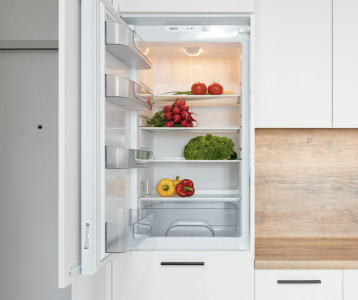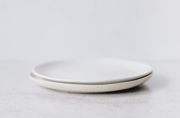This one fridge setting tweak could help cut your energy bill by $43 a year
By
Veronica E.
- Replies 0
When temperatures rise and the AC kicks in, energy bills can spike fast.
But there’s a surprisingly simple trick hiding in plain sight that could help you save money—all it takes is a small adjustment on your refrigerator’s dial.
You don’t need to upgrade your appliances or change your whole routine.
With a quick twist of a knob and a little patience, you could see real savings over the next year.
Here’s how this fridge hack works, why it’s food-safe, and how to make sure you’re doing it right.

Most people set their refrigerator once and forget about it, assuming colder is better.
But experts say that keeping your fridge too cold wastes more energy than you might realize—without making your food any safer.
The FDA recommends setting your fridge at or below 40°F to prevent foodborne bacteria.
Many households go far lower, sometimes down to 30°F, which isn’t necessary and can drive up electricity use.
Energy specialists at Edison International estimate that raising your fridge temperature by 10 degrees could reduce energy use by up to 25%.
So, if you shift your setting from 30°F to a still-safe 38°F, you may be cutting usage by about 20%.
If your fridge typically uses around 72 kilowatt-hours per month and your electric rate is 25 cents per kWh, that simple change could save you $3.60 a month—or roughly $43 a year.
Not bad for a change that only takes a minute to try!
After adjusting your fridge dial, it may take up to 24 hours for the new temperature to stabilize.
Use a thermometer placed on the middle shelf to track the change. Once it settles near 38°F, you’re in the energy-saving sweet spot.
Don’t worry if you don’t see an immediate result—the change happens gradually as your appliance adapts.
You might wonder whether a slightly warmer fridge increases your risk of spoiled food.
According to FDA guidelines, food stored at 40°F or below is still considered safe.
Many experts suggest aiming for 37–38°F to provide a small buffer for temperature fluctuations or inaccuracies in older thermostats.
Just don’t let the temperature climb above 40°F—anything higher could compromise food safety.
Not sure how to make the adjustment? Here’s a quick refresher:
While you’re updating your fridge setting, here are a few other easy ways to keep your home cooler and your bills lower:
Whether it’s a quick twist of a dial or a small daily habit, every little change adds up.
By being mindful of how our appliances run, we can stay comfortable, protect our food, and keep more money in our pockets—all without much effort.
Here's to staying cool, saving smart, and making the most of what we already have.
Read next: Are you storing butter the right way? Experts explain how to keep it fresh and safe

Have you tried changing your fridge setting? Did it help trim your energy bill? Or do you have other simple tricks for saving money during the summer months?
Share your thoughts in the comments. Sometimes, the smartest solutions are also the easiest—and they often start right at home.
But there’s a surprisingly simple trick hiding in plain sight that could help you save money—all it takes is a small adjustment on your refrigerator’s dial.
You don’t need to upgrade your appliances or change your whole routine.
With a quick twist of a knob and a little patience, you could see real savings over the next year.
Here’s how this fridge hack works, why it’s food-safe, and how to make sure you’re doing it right.

A simple adjustment to your fridge settings could lead to noticeable savings on your energy bill—all without sacrificing food safety. Image Source: Pexels / Max Vakhtbovycn.
Your fridge might be working harder than it needs to
Most people set their refrigerator once and forget about it, assuming colder is better.
But experts say that keeping your fridge too cold wastes more energy than you might realize—without making your food any safer.
The FDA recommends setting your fridge at or below 40°F to prevent foodborne bacteria.
Many households go far lower, sometimes down to 30°F, which isn’t necessary and can drive up electricity use.
Also read: Household item beats bleach for mold in your fridge—discover the secret!
A few degrees warmer could lead to big savings
Energy specialists at Edison International estimate that raising your fridge temperature by 10 degrees could reduce energy use by up to 25%.
So, if you shift your setting from 30°F to a still-safe 38°F, you may be cutting usage by about 20%.
If your fridge typically uses around 72 kilowatt-hours per month and your electric rate is 25 cents per kWh, that simple change could save you $3.60 a month—or roughly $43 a year.
Not bad for a change that only takes a minute to try!
Also read: Fridge finds: A surprising refrigerator trick you didn't know you needed!
Give your fridge a day to adjust
After adjusting your fridge dial, it may take up to 24 hours for the new temperature to stabilize.
Use a thermometer placed on the middle shelf to track the change. Once it settles near 38°F, you’re in the energy-saving sweet spot.
Don’t worry if you don’t see an immediate result—the change happens gradually as your appliance adapts.
Food safety still comes first
You might wonder whether a slightly warmer fridge increases your risk of spoiled food.
According to FDA guidelines, food stored at 40°F or below is still considered safe.
Many experts suggest aiming for 37–38°F to provide a small buffer for temperature fluctuations or inaccuracies in older thermostats.
Just don’t let the temperature climb above 40°F—anything higher could compromise food safety.
Also read: Why are Gen Z smoking in front of their fridges? The surprising new trend you need to know about
How to check and change your fridge setting
Not sure how to make the adjustment? Here’s a quick refresher:
- Locate the dial – Most fridges have a numbered dial inside, usually labeled from cold to coldest. If you’re not sure what the numbers mean, check your fridge’s manual or look it up online by model.
- Use a thermometer – Don’t rely on the built-in setting alone. Place a thermometer in the center of the fridge and check it after 24 hours.
- Make small changes – If your fridge is colder than 38°F, raise the setting slightly. If it’s warmer than 40°F, lower it. Keep adjusting until you find that 37–38°F range.
Also read: Are you unknowingly poisoning yourself? An expert reveals the everyday items you should NEVER put in your fridge
A few more ways to keep your summer bills down
While you’re updating your fridge setting, here are a few other easy ways to keep your home cooler and your bills lower:
- Keep the fridge stocked – A full fridge retains cold better than an empty one. If you’re short on groceries, fill space with jugs of water.
- Inspect the door seals – If a dollar bill slips out easily when the door is closed, your gasket might need replacing.
- Cool food before storing – Putting hot leftovers straight into the fridge makes the appliance work harder. Let them cool first.
- Clean the coils – Dust buildup can reduce fridge efficiency. Clean the coils behind or underneath the unit every few months.
- Use fans wisely – In summer, ceiling fans should spin counterclockwise to push cool air downward, easing the load on your AC.
Whether it’s a quick twist of a dial or a small daily habit, every little change adds up.
By being mindful of how our appliances run, we can stay comfortable, protect our food, and keep more money in our pockets—all without much effort.
Here's to staying cool, saving smart, and making the most of what we already have.
Read next: Are you storing butter the right way? Experts explain how to keep it fresh and safe
Key Takeaways
- Adjusting your fridge from 30°F to 38°F can save about $43 a year on energy costs.
- The FDA recommends keeping fridge temps at or below 40°F, with 37–38°F being ideal.
- It can take up to 24 hours for your fridge to settle into a new setting, so be patient and use a thermometer.
- Additional savings can come from keeping the fridge full, cleaning the coils, sealing the doors, and using ceiling fans smartly in summer.
Have you tried changing your fridge setting? Did it help trim your energy bill? Or do you have other simple tricks for saving money during the summer months?
Share your thoughts in the comments. Sometimes, the smartest solutions are also the easiest—and they often start right at home.






